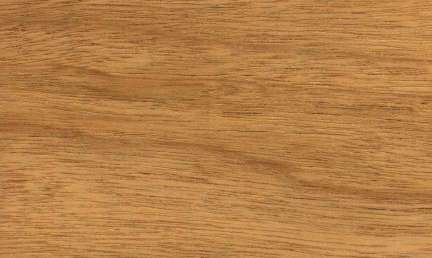 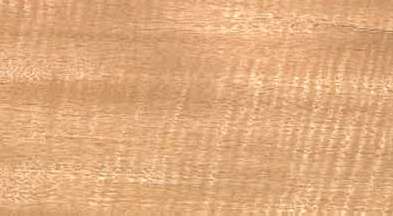 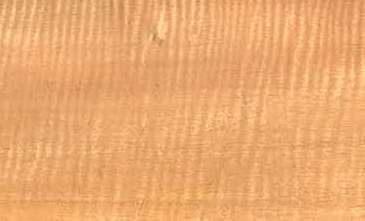 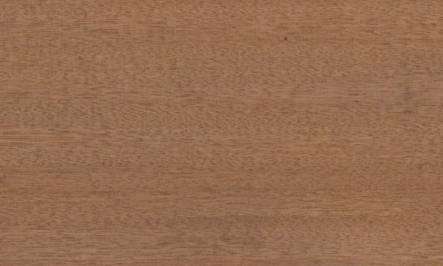 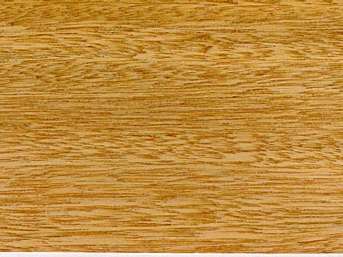
Idigbo (Terminalia ivorensis)
Family: Combretaceae
Common names: Ada, Ada boumbra, Afara duclu, Afara dudu, Afara-dudu, Afia, African greenheart, African yellow wood, Amire, Ampira, Anidja, Awenshin, Bagyi, Bahi, Bai, Bai-ti, Baji, Bajii, Banidi, Basio, Bassi, Baye, Be-ie, Black afara, Black bark, Black-barked terminalia, Blie, Bona, Bossi, Boti, Boumbia, Bouna, Bouri, Bragba, Brimstone-wood, Buma, Buna, Cauri, Chasemiich, Dzogbedodo, Ebi, Efremeli, Eghoin-nebi, Eghoinmebbi, Egoyn odan, Egoyn-odan, Egoyne lukan, Egoyne nebi, Egoyne-lukan, Egoyne-nebi, Emen, Emeri, Emil, Emine, Emri, Epepe, Esemi, F'araeneri, Farayemile, Farayomile, Fataromile, Fela, Fira-wase, Frameri, Framine, Framire, Gbasi, Idigbo, Ijaws, Indigbo, Ka ronko, Kekange, Kil, Kokango, Kung, Lauri, Lidia, Mboti, N'dagobrohia, Nkombe, Nkondi, Okpoha, Onhidgo, Onidjo, Ouhidji, Oweive, Owewe, Ronko, Satin-wood, Shingle wood, Tewogboye, Tilautaea, Tuhidia, Tuhidya, Ubiri, Yellow pine, Yellow terminalia
Distributed in: Cameroon, Ghana, Guinea, Ivory Coast, Liberia, Nigeria, Sierra Leone (Africa)
Distribution overview: Terminalia is a large genus consisting of over 200 species of very large trees that occur extensively in the tropical regions of the world. The natural growth range of T. ivorensis is in tropical West Africa and extends from Guinea to Cameroon. It is usually found in abundance in primary and secondary forests and transitional zones. The species has also been successfully cultivated elsewhere in plantations.
Common uses: Bedroom suites, Boat building (general), Boxes and crates, Bridge construction, Building materials, Cabinetmaking, Canoes, Chemical derivatives, Core Stock, Decorative veneer, Domestic flooring, Drawer sides, Exterior trim & siding, Exterior uses, Factory flooring, Figured veneer, Flooring, Fuelwood, Furniture , Furniture, General carpentry, Interior construction, Interior trim, Joinery, Kitchen cabinets, Light construction, Living-room suites, Matches, Millwork, Mine timbers, Moldings, Musical instruments: percussion, Office furniture, Paneling, Parquet flooring, Particleboard, Plain veneer, Plywood, Posts, Pulp/Paper products, Radio - stereo - TV cabinets, Railroad ties, Shakes, Sheathing, Shingles, Shipbuilding, Siding, Sub-flooring, Trimming, Turnery, Vehicle parts, Veneer, Veneer: decorative, Wainscotting
Product sources: The timber is used in large quantities for joinery in Europe, but it is imported in small amounts into the United States, since some of its uses can be met by many native species. Price is in the moderate range. Idigbo has been suggested as a possible matching material for Oak veneers to cut costs on solid sections.The ITTO reports that timber from this species is produced in limited quantities. Export is at a regular rate.
Environment profile: Generally secure within most of its natural habitat, but note exceptions.
Tree size: Trunk diameter is 100-150 cm
Colors: the heart isRed, Yellow to golden-yellow to orangeand the sapwoodSame as heartwood, Yellowish brown.The grain isWeak figure, the textureUniformand the lusterSlightly lustrous
Natural durability: Susceptible to insect attack, Susceptible to marine borer attack
Odor: No specific smell or taste
LightInduced Color Change: Darker
Kiln Schedules: UK=J US=T10D5S/T8D4S Fr=4
Kiln Drying Rate: Rapid (<10 days for boards < 32 mm, to <30 days for boards >= 63 mm)
Drying Defects: Slight tendency to distort and check, Splitting
Ease of Drying: Slowly
Tree Identification: Bole/stem form is straight
Comments: Corrosive Materials - Wet wood may react with iron and steel fittings to promote corrosion, and a yellow dye in the wood may stain moist textile materials. Wood from Ivory Coast and Ghana are reported to contain resin seamsGeneral finishing qualities are rated as good
Blunting Effect: Slight dulling effect on cutting tools
Boring: Fairly easy to very easy
Carving: Responds very well to hand tools
Cutting Resistance: Low resistance to sawing
Gluing: Good gluing properties
Mortising: Fairly Easy to Very Easy
Slow mortising speeds have been suggested since the wood is liable to char at high speeds
Moulding: Fairly Easy to Very Easy
Movement in Service: Fairly Easy to Very Easy
Nailing: Fairly Easy to Very Easy, Satisfactory nailing properties
Planing: Special attention required
Resistance to Impregnation: Sapwood is extremely resistant
Response to hand tools: Variable qualities
Routing recessing: Satisfactory routing properties
Sanding: Good sanding properties
Veneering qualities: Veneers easily, Veneers moderately easy
Steam bending: Very poor
Screwing: Easy to screw, Good screwing properties; Turning: Very Good to Excellent Results
Polishing: Satisfactory; Staining: Stains well;
- Numerical data Metric
- Numerical data English
- Strength properties
- References
 |
 |
 |
 |
| Item |
Green |
Dry |
Metric |
| Specific Gravity |
0,42 |
0,54 |
|
| Density |
|
528 |
kg/m3 |
| Bending Strength |
511 |
812 |
kg/cm2 |
| Crushing Strength |
252 |
447 |
kg/cm2 |
| Hardness |
|
431 |
kg |
| Impact Strength |
|
43 |
cm |
| Shearing Strength |
|
100 |
kg/cm2 |
| Stiffness |
77 |
97 |
1000 kg/cm2 |
| Tangential Shrinkage |
5 |
|
% |
| Radial Shrinkage |
3 |
|
% |
| Weight |
592 |
512 |
kg/m3 |
| Maximum Load |
0,35 |
0,49 |
cm-kg/cm3 |
| Toughness |
|
157 |
cm-kg |
| Static Bending |
|
|
kg/cm2 |
|
 |  |  |  | | Item | Green | Dry | English | | Bending Strength | 7271 | 11554 | psi | | Density | | 33 | lbs/ft3 | | Hardness | | 951 | lbs | | Impact Strength | | 17 | inches | | Maximum Crushing Strength | 3593 | 6360 | psi | | Shearing Strength | | 1430 | psi | | Stiffness | 1101 | 1380 | 1000 psi | | Toughness | | 137 | inch-lbs | | Work to Maximum Load | 5 | 7 | inch-lbs/in3 | | Specific Gravity | 0.42 | 0.54 | | | Weight | 37 | 32 | lbs/ft3 | | Radial Shrinkage | 3 | | % | | Tangential Shrinkage | 5 | | % | | Volumetric Shrinkage | 9 | | % | |
Density (dry weight) = 31-37 lbs/cu. ft. 0
Max. crushing strength = medium 0
Modulus of Elasticity (stiffness) = very low 0
Bending strength (MOR) = low 0
Hardness (side grain) = soft 0
Shrinkage, Tangential = very small 0
Shrinkage, Tangential = small 0
Shrinkage, Radial = small 1
Shrinkage, Radial = very small
Shearing strength (parallel to grain) = very low
Bending strength (MOR) = medium
Shrinkage, Radial = moderate
Shearing strength (parallel to grain) = low
Max. crushing strength = low
Density (dry weight) = 38-45 lbs/cu. ft.
Density (dry weight) = 23-30 lbs/cu. ft.
Toughness-Hammer drop (Impact Strength) = very low
Shrinkage, Tangential = moderate
Modulus of Elasticity (stiffness) = low
Shearing strength (parallel to grain) = medium
Hardness (side grain) = very soft
Work to Maximum Load = very low
Modulus of Elasticity (stiffness) = medium
Bending strength (MOR) = high
The timber is rather low in strength properties, and can be rendered even weaker if brittleheart is present.
Armstrong, F.H.,1960,The Strength Properties of Timber,Forest Products Research Laboratory, London Bulletin,No.45Bois et Forets Des Tropiques,1947,Le Framire (Terminalia ivorensis,Bois et Forets des Tropiques No.1 pp.48-52Bois et Forets des Tropiques,1974,Framire (Terminalia ivorensis,Bois et Forets des Tropiques,No.153,pp23-34Bois, P.J.,1966,The Strength Properties of Tanzania Timbers,Tanzania Forest Div. Util. Sec. Moshi Tech. Note, No.35Bolza, E., Keating, W.G.,1972,African Timbers - the Properties, Uses and Characteristics of 700 Species,C.S.I.R.O. Div. of Building ResearchBond, C.W.,1950,Colonial Timbers,Sir Issac Pitman & Sons Ltd. LondonBritish Woodworking Federation. 1995. Which Wood . Published by the British Woodworking Federation, Broadway House, Tothill Street, London.Brown, W.H.,1969,Properties and uses of Tropical hardwoods in the United Kingdom. Part 1,Nonstructural properties and uses.,Conference on Tropical hardwoods SC-5/TN-5, Syracuse UniversityBrown, W.H.,1978,Timbers of the World No.1 Africa,TRADA, Red Booklet SeriesChalk, L.,1933,Twenty West African Timber Trees,Forest Trees and Timbers of the British Empire,Part 2Chudnoff, M.,1984,Tropical Timbers of the World,U.S.A. Department of Agriculture, Forest Service, Forest Products,Laboratory, Madison.Clifford, N.,1952,Tropical Hardwoods for Building,Builder,110(5689, pp338-9Clifford, N.,1953,Commercial Hardwoods - Their Characteristics Identification and,Utilization,Sir Isaac Pitman & Sons Ltd. LondonCox, H.A.,1939,A Handbook of Empire Timbers,Forest Products Research Laboratory, Princes RisboroughCrossley, N., Ogunle, O.A.,1964,Studies on the suitability of Nigerian raw materials for paper making VI,Fed. Inst. Ind. Res. Nigeria Research report,No.25Erfurth, T., Rusche, H.,1976,The Marketing of Tropical Wood A. Wood Species from African Moist Forests,F.A.O. Forestry DepartmentFarmer, R.H.,1972,Handbook of Hardwoods,HMSOForest Products Research Laboratory, U.K.,1945,A Handbook of Empire Timbers,Department of Scientific and Industrial Research Forest Products ResearchForest Products Research Laboratory, U.K.,1955,Kiln-Drying Schedules,Forest Products Research Laboratory, Princes Risborough, Department of,Science and Industrial Research, Building Research Establishment Leaflet,No.42Forest Products Research Laboratory, U.K.,1968,Report on a Consignment of Heglig (Balanites aegyptiaca) from the Republic,of the Sudan,Forest Products Research Laboratory, Princes Risborough, Reports on,Overseas Timber, No.9Forests Products Research Laboratory, U.K.,1956,A Handbook of Hardwoods,Forest Products Research Laboratory, Princes Risborough, Department of,Science and Industrial Research, Building Research EstablishmentFortin, Y., Poliquin, J.,1976,Natural Durability and Preservation of 100 Tropical African Woods,International Development Research Centre, CanadaFrance - C.T.F.T.,1961,Resultats des Observations et des Essais Effectues au CTFT sur Framire,C.T.F.T. Information Tec., No.115France - C.T.F.T.,1966,Bois Tropicaux,C.T.F.T. Publ.,12France - C.T.F.T.,1977,Promotion of African Timbers - New Species,CTFT,35 LeafletsFrance - Comite Nacional des Bois Coloniaux,1931,Etude Physique et Mecanique des Bois Coloniaux,Assoc. Colonies-Sciences & Comite National des Bios Coloniaux, Paris,,FranceGhana - Timber Marketing Board,1969,Ghana Hardwoods,Timber Marketing BoardHarrar, E.S.,1942,Some Physical Properties of Modern Cabinet Woods 3. Directional and Volume,Shrinkage,Tropical Woods,9(71, pp26-32HMSO.1981.Handbook of Hardwoods, 2nd Edition.Revised by R. H. Farmer.Department of the Environment, Building Research Establishment, Princes Risborough Laboratory, Princes Risborough, Aylesbury, Buckinghamshire.Hughes, J.F.,1971,The Principal Timber Trees of Cameroon,Unpublished dataI.U.F.R.O.,1973,Veneer Species of the World,Assembled at F.P.L. Madison on behalf of I.U.F.R.O. Working Party on,Slicing and Veneer CuttingIrvine, F.R.,1961,Woody Plants of Ghana,O.U.P. LondonITTO.1986.Tropical Timber Atlas, Volume 1 - Africa.International Tropical Timber Organization (ITTO) and Centre Technique Forestier Tropical (CTFT, 45bis, Avenue de la Belle Gabrielle, Nogent-sur-Marne Cedex, France.Jay, B.A.,1968,Timbers of West Africa,TRADA, Red Booklet SeriesKeay, R.W.J.1989. Trees of Nigeria.Revised Version of Nigerian Trees . Clarendon Press, Oxford.Keay, R.W.J., et al,1960,Nigerian Trees Vol.1,Nigeria Federal Department of Forest Research, IbadanKennedy, J.D.,1936,Forest Flora of Southern Nigeria,Government Printer LagosKinloch, D., Miller, W.A.,1949,Gold Coast Timbers,Govt. Printer Gold CoastKline, M. 1987. Terminalia ivorensis - Idigbo. In A Guide to Useful Woods of the World. Flynn Jr., J.H., Editor. King Philip Publishing Co., Portland, Maine. 1994. Page 339-340.Kloot, N.H., Bolza, E.,1961,Properties of Timbers Imported into Australia,C.S.I.R.O. Forest Products Division Technological Paper,No.12Kribs, D.A.,1950,Commercial and Foreign Woods on the American Market (a manual to their,structure, identification, uses and distribution,U.S.A. Penn. State College, Tropical Woods LaboratoryKryn, J.M., Forbes, E.W.,1959,The Woods of Liberia,U.S.A. Department of Agriculture,Forest Products Laboratory, Madison,,Report No. 2159Kukachka, B.F.,1970,Properties of Imported Tropical Woods,Forest Research Paper FPL 125Kunkel, G.,1965,The Trees of Liberia,German Forestry Mission to Liberia Report,No.3Lavers, G.M. 1966. The Strength Properties of Timbers. Forest Products Research Bulletin, No. 50. Ministry of Technology, Her Majesty's Stationery Office, London.Lavers, G.M.,1983,The Strength Properties of Timber (3rd ed. revised Moore G.L.,Forest Products Research Laboratory, Princes Risborough, Building Research,Establishment Report (formerly Bulletin No.50)Lincoln, W.A. 1986. World Woods in Color. Linden Publishing Co. Inc., Fresno, California.Murira, K.,1984,Natural Durability Tests of Tanzanian Timbers 1955 - 1982,Tanzania Forestry Research Institute, Timber Utilisation Research Centre,,Moshi.Organisation for European Economic Co-operation,1951,African Tropical Timber (Nomenclature, Description,OEECPatterson, D.,1988,Commercial Timbers of the World, 5th Edition,Gower Technical PressRendle, B.J.,1969,World Timbers (3 Vols.,Ernest Benn Ltd. LondonSallenave, P.,1955,Proprietes Phyiques et Mecaniques des Bois Tropicaux de l'Union Francaise,C.T.F.TSallenave, P.,1964,Proprietes Physiques et Mecaniques des Bois Tropicaux (Premier Supplement,C.T.F.T. Publ.,no.23Sallenave, P.,1971,Proprietes Physiques et Mecaniques des Bois Tropicaux (Deuxieme,Supplement,C.T.F.T.Savill, P.S., Fox, J.E.D.,1967,Trees of Sierra LeoneSpalt, H.A., Stern, W.L.,1956,Survey of African woods 1,Tropical Woods,115(105,pp 13-38Spalt, H.A., Stern, W.L.,1959,Survey of Africa Woods 4,Tropical Woods 17(110) pp42-115Takahashi, A.,1978,Compilation of Data on the Mechanical Properties of Foreign Woods (Part,III) Africa,Shimane University, Japan, Research Report on Foreign Wood No. 7Taylor, C.J.,1960,Synecology and Silviculture in Ghana,University College of Ghana Thomas Nelson and SonsTimber Development Association Ltd.,1955,World Timbers (3 Vols.,Timber Development Association Ltd.Titmuss, F.H.,1965,Commercial Timbers of the World,Technical Press Ltd., London, 3rd editionVoorhoeve, A.G.,1965,Liberian High Forest Trees,Centre for Agric. Publishing and Documentation, WageningenWCMC. 1992. Conservation Status Listing - Trees and Timbers of the World, World Conservation Monitoring Centre, Plants Programme, 219 Huntingdon Road, Cambridge, CB3 ODL, United Kingdom.Wood, B., Calnan, D.,1976,Toxic Woods,British Journal of Dermat 94 Suppl. 13
|












